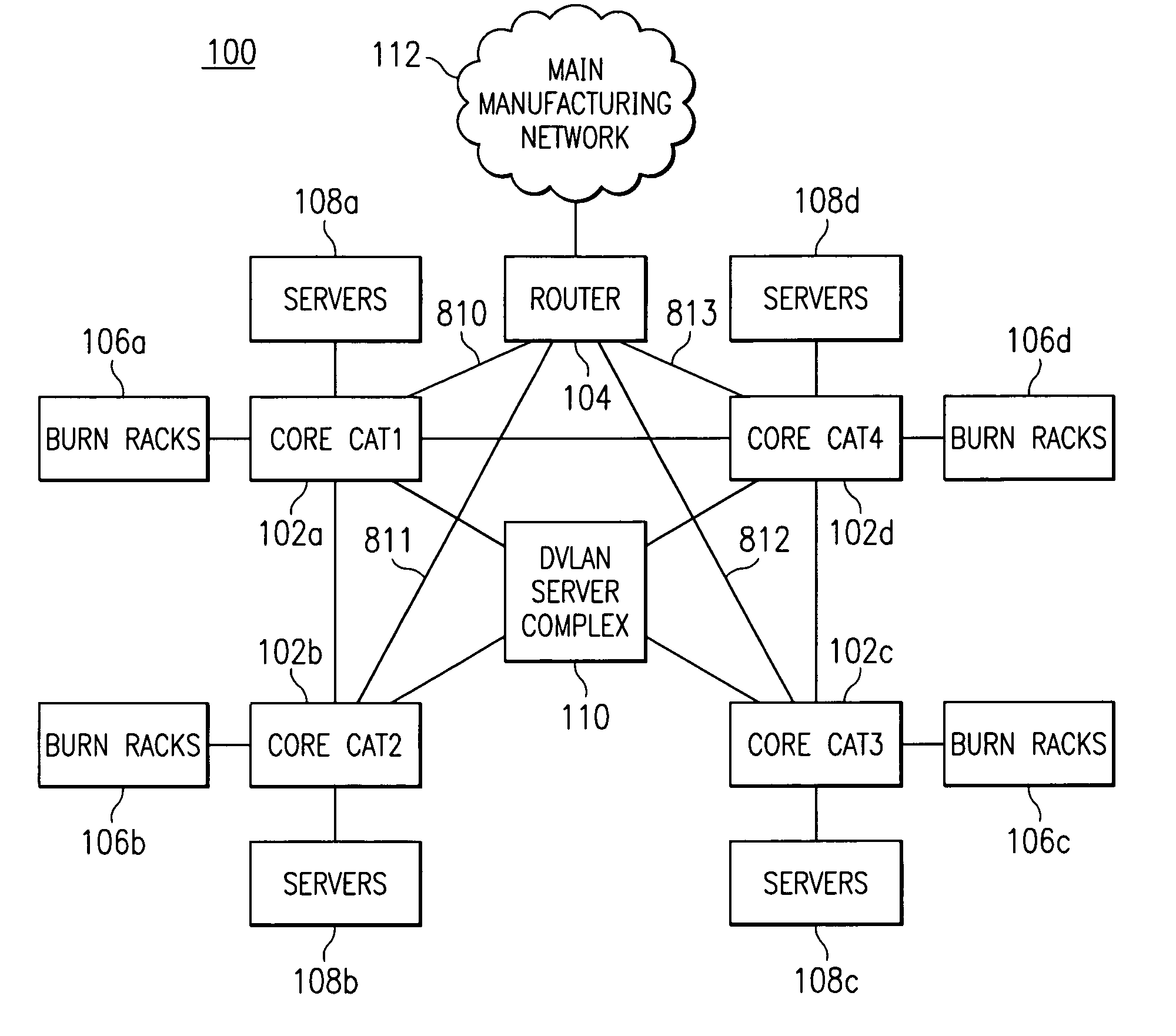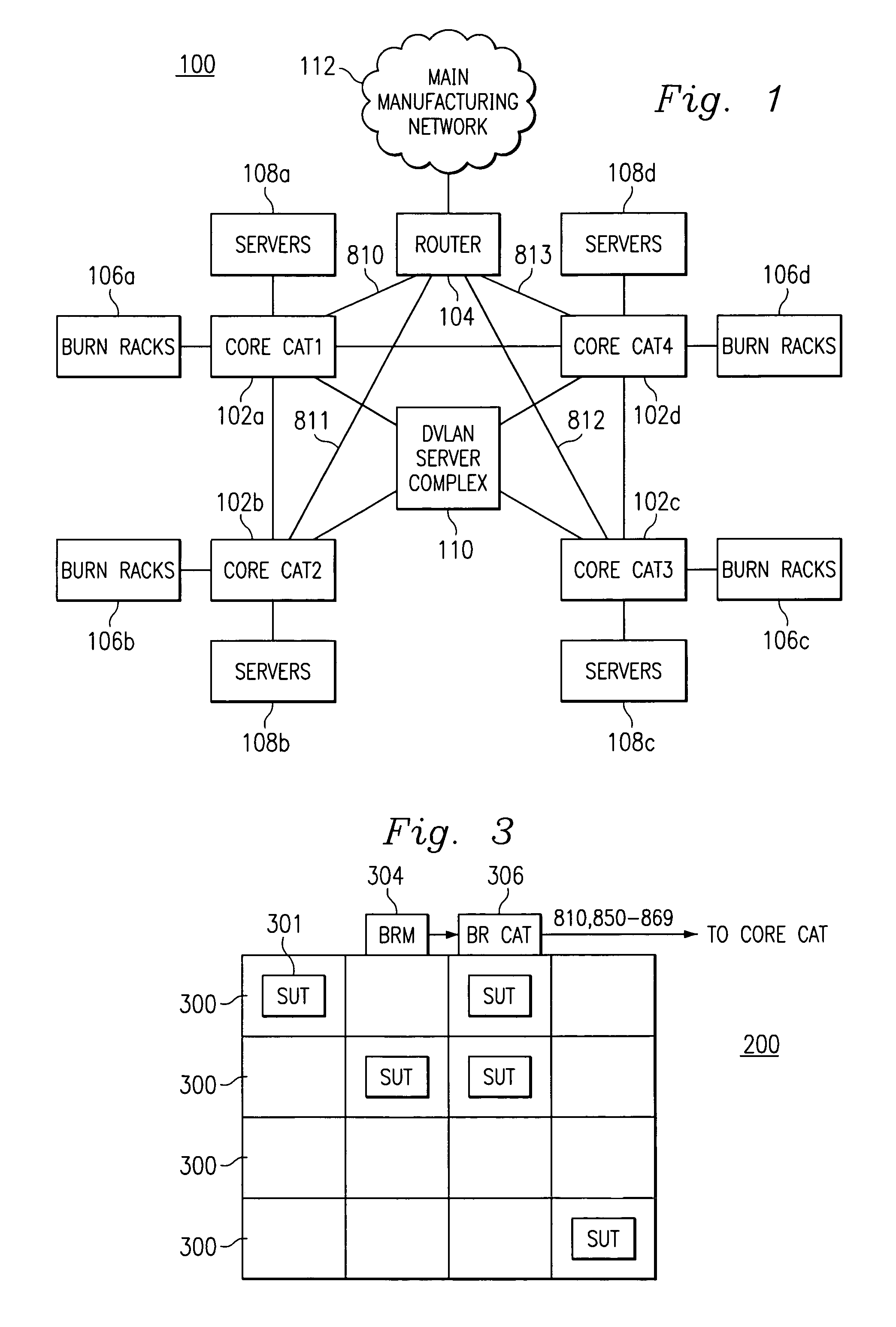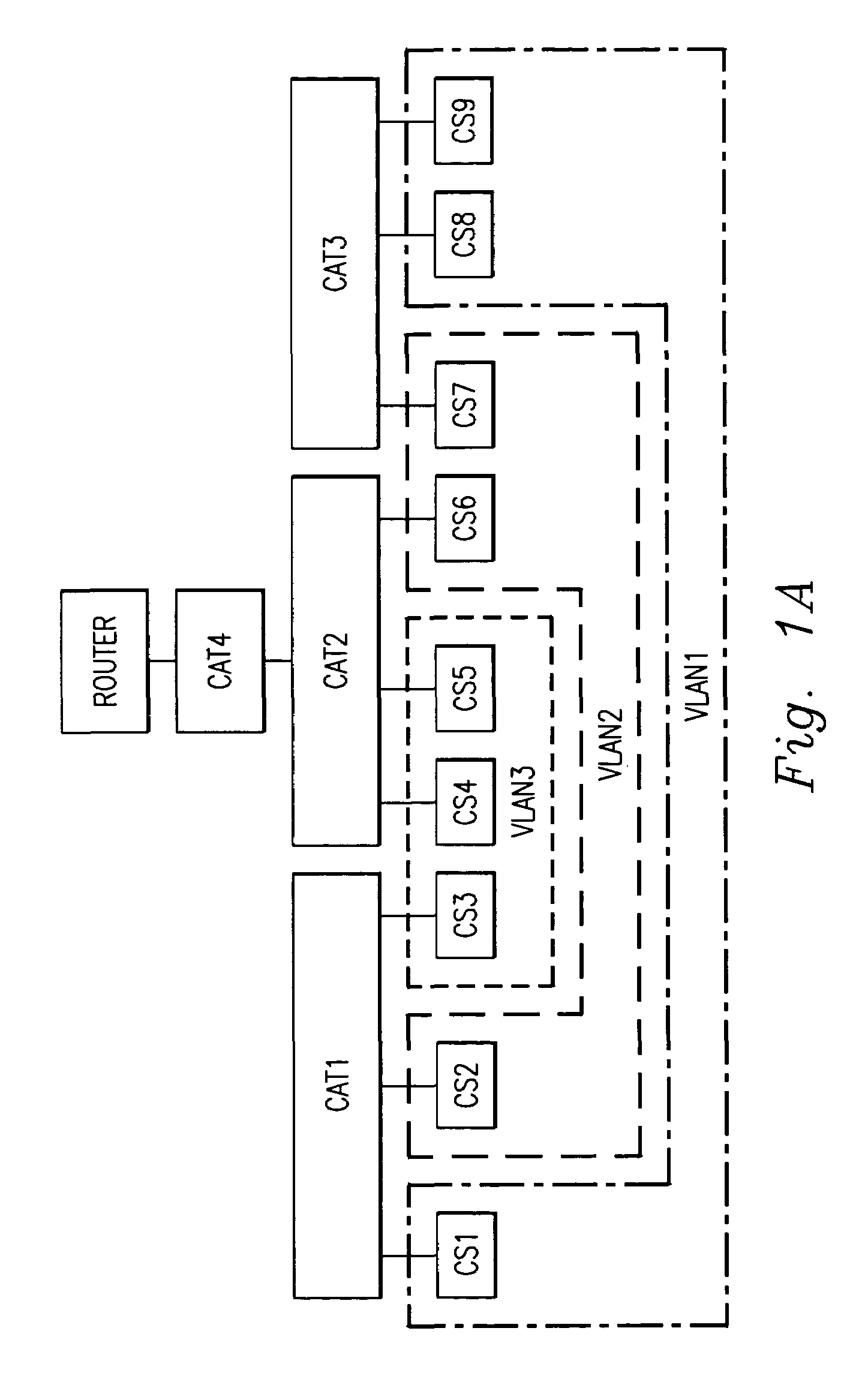Site-to-site dynamic virtual local area network
a virtual local area network and site-to-site technology, applied in data switching networks, frequency-division multiplexes, instruments, etc., can solve the problems of not being accessible to non-customer suts on conflicting custom configurations with the main manufacturing network, and causing operator errors, so as to reduce the amount of operator intervention needed, and facilitate configuration
- Summary
- Abstract
- Description
- Claims
- Application Information
AI Technical Summary
Benefits of technology
Problems solved by technology
Method used
Image
Examples
second embodiment
[0052]FIG. 10 is a system block diagram illustrating an implementation of a site-to-site DVLAN arrangement 1000 according to a As will be evident, the arrangement 1000, unlike the arrangement 900, is scalable. In FIG. 10, a local site 1002 includes a plurality of SUTs 1004 on multiple VPNs are connected to a core CAT 1006 via an Ethernet link 1008 including a CAT 1010, such that the Ethernet link 1008 is capable of promoting all of the various VPNs to which the SUTs 1004 are connected. A similar arrangement exists at a remote site 1012, a plurality of SUTs 1014 on multiple VPNs are connected to a core CAT 1016 via an Ethernet trunk 1018 including a CAT 1020. Although not shown in FIG. 10, it will be recognized that the SUTs 1004, 1014, will typically reside in burn racks. Again, the Ethernet link 1018 is capable of promoting all of the various VPNs to which the SUTs 1014 are connected.
[0053]The core CATs 1006, 1016, are connected to one another via an ATM connection 1030 that inclu...
third embodiment
[0054]FIG. 11 is a system block diagram illustrating an implementation of a site-to-site DVLAN arrangement 1100 according to a As will be evident, the arrangement 1100, like the arrangement 1000, is scalable. In FIG. 11, a local site 1102 includes a plurality of SUTs 1104 on multiple VPNs are connected to a core CAT 1106 via an Ethernet link 1108 including a CAT 1110, such that the Ethernet link 1108 is capable of promoting all of the various VPNs to which the SUTs 1104 are connected. Although not shown in FIG. 11, it will be recognized that the SUTs 1104 will typically reside in burn racks. At a remote site 1112, a plurality of customer sites 1114 are connected to a core CAT 1116 via an Internet connection 1117, which is made up of VPN “tunnels” established over the Internet to customer sites 1114, and an Ethernet link 1118 including a shared router 1120 such that the Ethernet link 1118 is capable promoting all of the various VPNs to which the SUTs 1104 are connected. The customer...
fourth embodiment
[0057]FIG. 12 is a system block diagram illustrating an implementation of a site-to-site DVLAN arrangement 1200 according to a As will be evident, the arrangement 1200, like the arrangements 1000 and 1100, is scalable. In FIG. 12, a local site 1202 includes a plurality of SUTs 1204 on multiple VPNs are connected to a core CAT 1206 via an Ethernet link 1208 including a CAT 1210, such that the Ethernet link 1208 is capable of promoting all of the various VPNs to which the SUTs 1204 are connected. Although not shown in FIG. 12, it will be recognized that the SUTs 1204 will typically reside in burn racks. At a remote site 1212, a single customer site 1214 is connected to a core CAT 1216 via a private high-speed connection 1215, such as a frame-relay or ISDN connection, including a router 1216, for providing a point-to-point connection between the customer site 1214 and the remote site 1212.
[0058]The core CATs 1206, 1216, are connected to one another via an ATM connection 1230 that incl...
PUM
 Login to View More
Login to View More Abstract
Description
Claims
Application Information
 Login to View More
Login to View More - R&D
- Intellectual Property
- Life Sciences
- Materials
- Tech Scout
- Unparalleled Data Quality
- Higher Quality Content
- 60% Fewer Hallucinations
Browse by: Latest US Patents, China's latest patents, Technical Efficacy Thesaurus, Application Domain, Technology Topic, Popular Technical Reports.
© 2025 PatSnap. All rights reserved.Legal|Privacy policy|Modern Slavery Act Transparency Statement|Sitemap|About US| Contact US: help@patsnap.com



